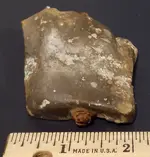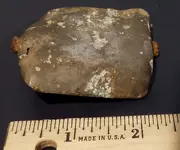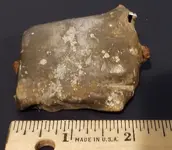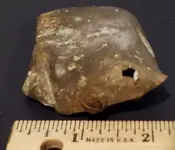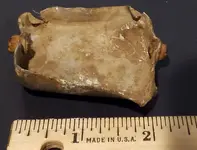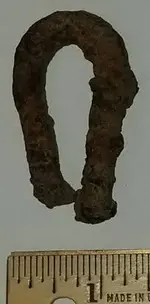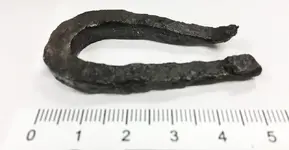invent4hir
Bronze Member
All, this was found near where a 19th century farmhouse once stood until it was demolished in 2011. It measures about 2.5” long x 2” wide. It is non-magnetic, seems light weight for its size, brittle, and difficult to straighten given how thin the metal is. On the left and right side of the first picture is screw with a flat-head screwdriver slot which makes me think it is a lid of some sort that opens/closes about those screws. In the center is a faint circle B with the number 120 appearing below it. There may be another number after the “0” — can’t tell. I searched images of match, snuff, and tobacco boxes — but saw nothing like it. I’d appreciate answers to the following questions:
1. What is it?
2. About how old is it?
3. Is the circle B a monogram or maker’s mark?
4. What does the “120” indicate?
1. What is it?
2. About how old is it?
3. Is the circle B a monogram or maker’s mark?
4. What does the “120” indicate?



